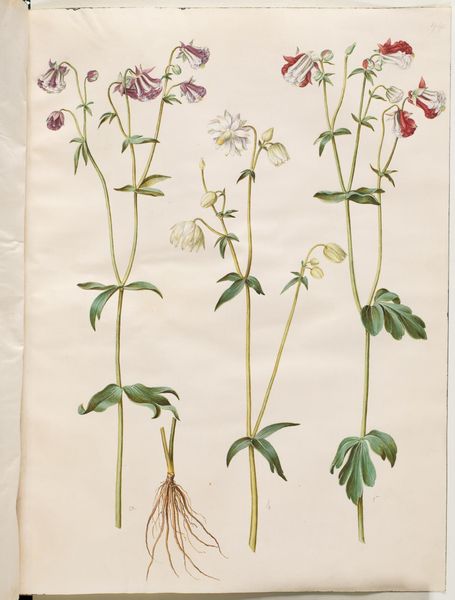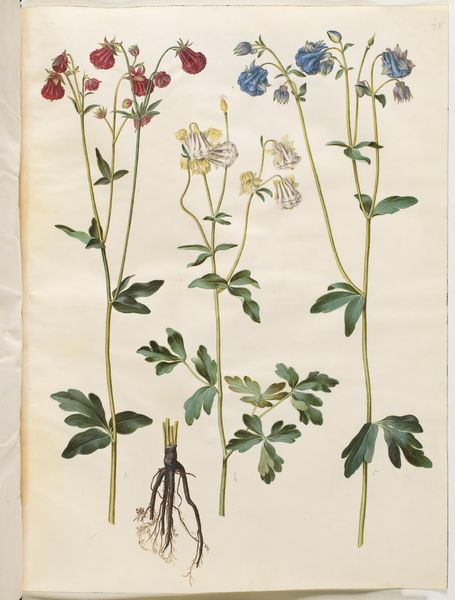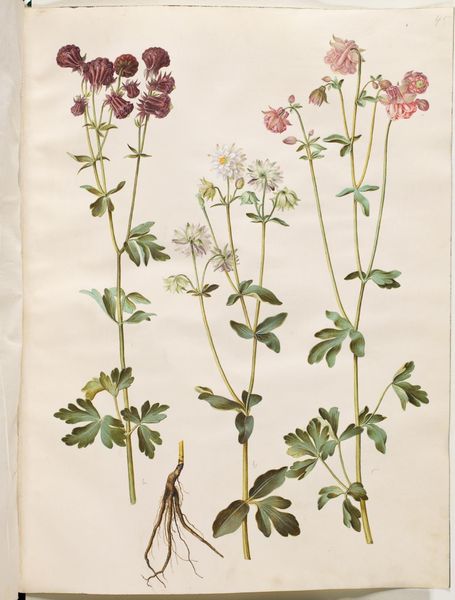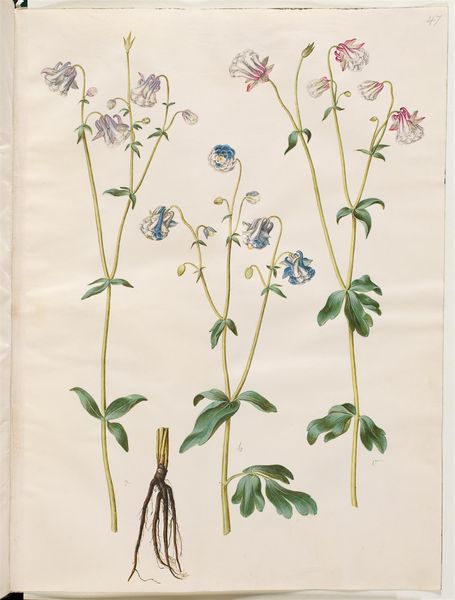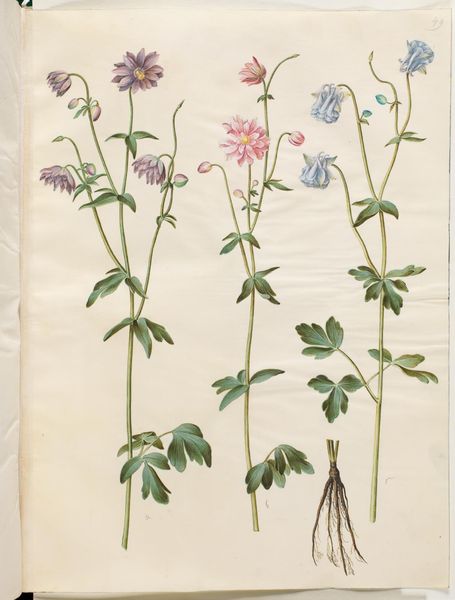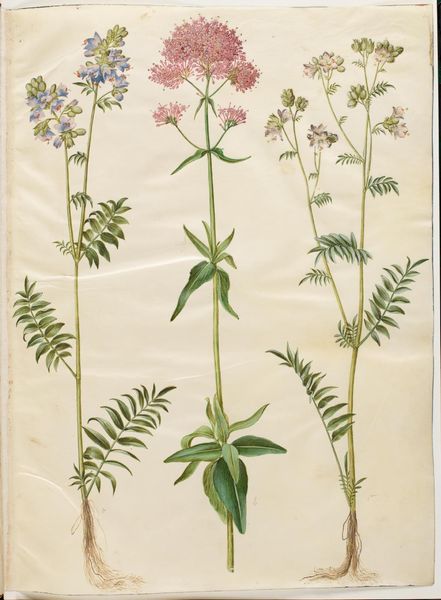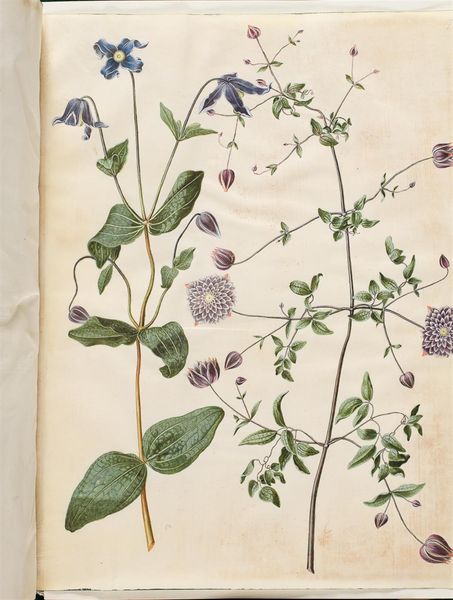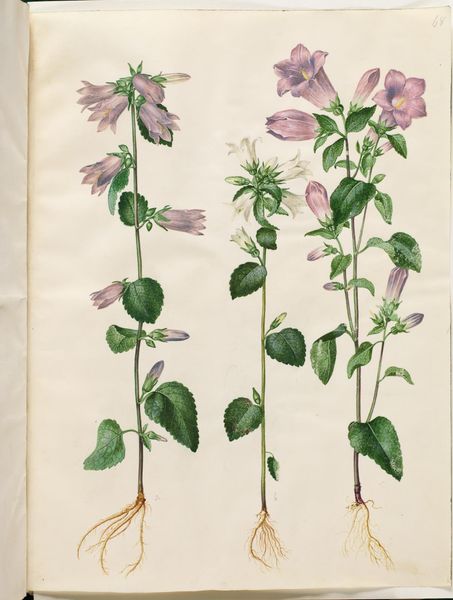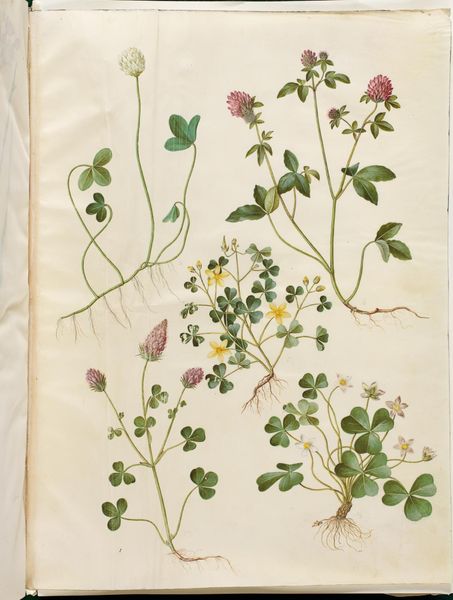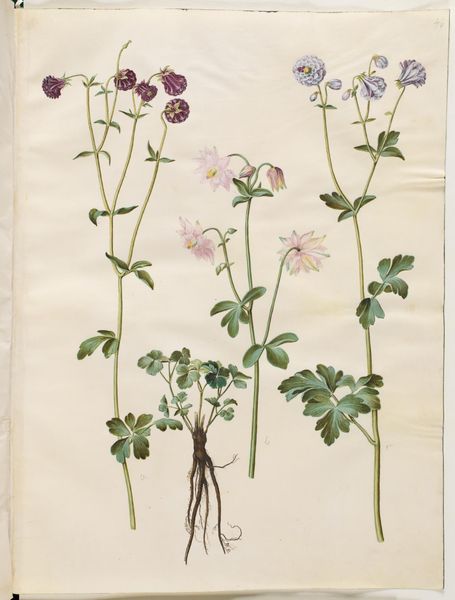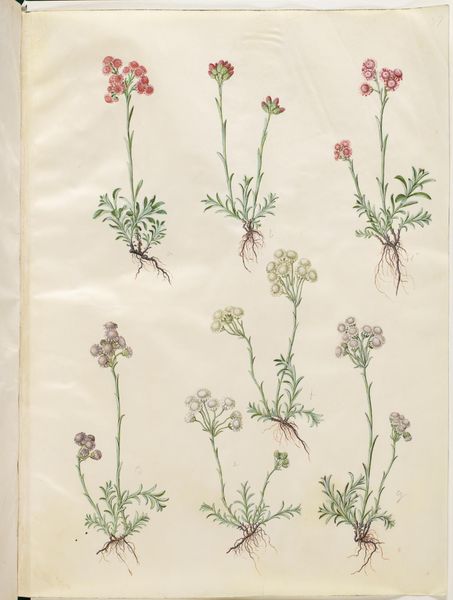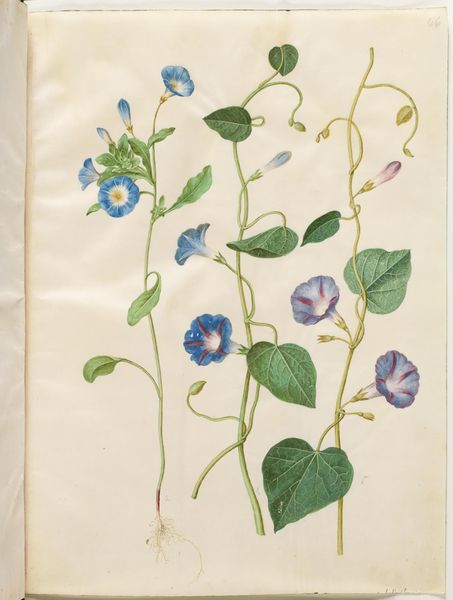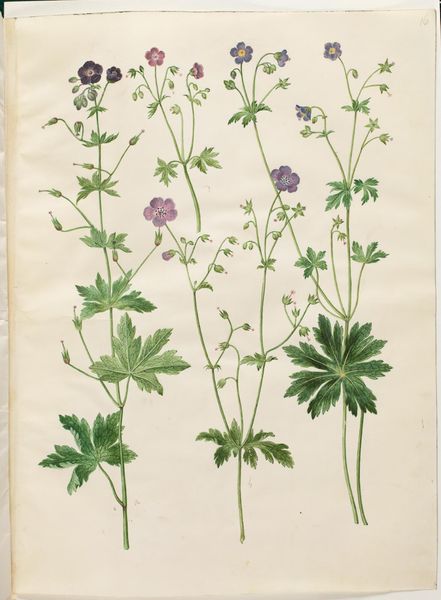
Aquilegia vulgaris (almindelig akeleje) 1649 - 1659
0:00
0:00
drawing, coloured-pencil, gouache, paper
#
drawing
#
coloured-pencil
#
gouache
#
paper
#
coloured pencil
#
early-renaissance
#
botanical art
Dimensions: 505 mm (height) x 385 mm (width) (bladmaal)
Curator: Take a moment to gaze at this botanical drawing by Hans Simon Holtzbecker, rendered between 1649 and 1659. What captures your attention initially? Editor: Those columbines look rather… melancholy, don't they? Almost drooping, as if weighed down by their own delicate beauty. I can feel a touch of somberness there. Curator: It is remarkable how Holtzbecker achieved such expressiveness! Note that the medium is primarily gouache and colored pencil on paper. It showcases early Renaissance style in its commitment to accurate botanical representation, even employing careful techniques for layering colors to give them almost a sense of dimension. Editor: Yes, there's something so compelling about the painstaking attention to detail in the depiction of these plants, which I could only assume meant that the study of nature was so important during the Renaissance. How interesting is the presentation! Like a herbarium sample that also happens to be a precious work of art. It's like pinning down something wild, examining its roots. The little root structure that's pictured! Curator: Exactly! Think about the social context. Holtzbecker would have served patrons who valued this type of work for its scientific accuracy but also for the prestige it brought, reflecting their cultivated knowledge and taste. The consumption of such art was part of a larger pattern of displaying one's wealth and education. Editor: Makes you wonder about Holtzbecker's studio! I imagine him meticulously grinding pigments and sketching furiously, illuminated by candlelight. Who was buying these pictures? Who did he imagine looking at it centuries from now? What would he think about you and me looking and talking about the work? Curator: I believe that bringing it into today helps us think about sustainability, doesn’t it? Editor: Absolutely. These detailed depictions remind us of the beauty and fragility inherent in the natural world, don't they? It speaks to conservation and the necessity of stewardship. I think that if we study his work, it can bring about an emotional connection to those topics.
Comments
No comments
Be the first to comment and join the conversation on the ultimate creative platform.
